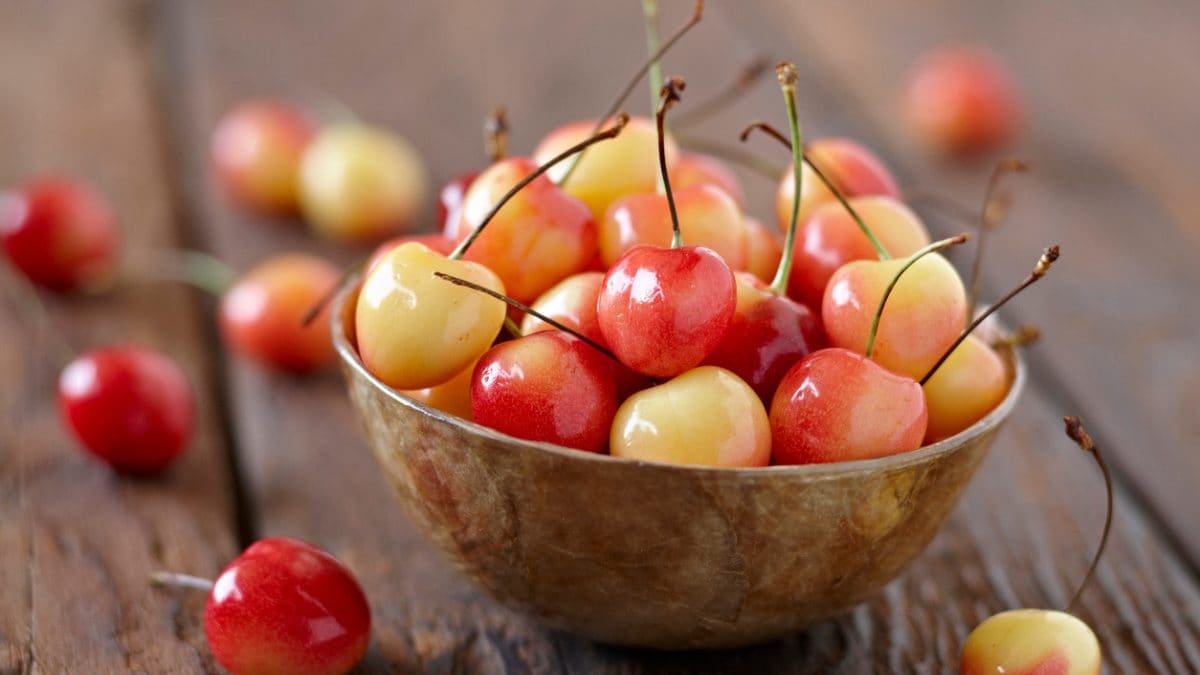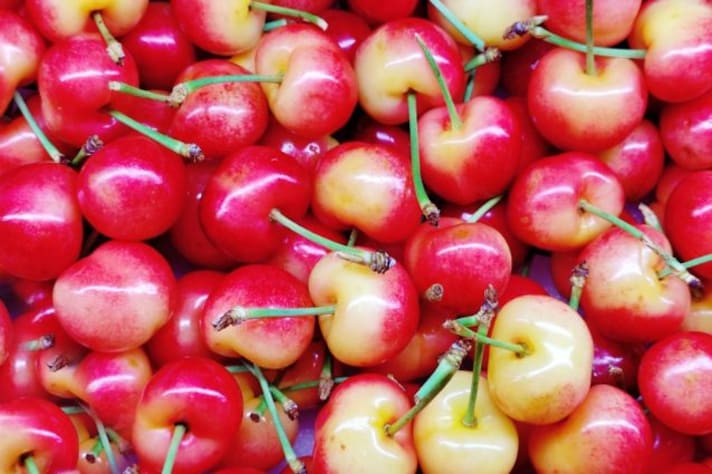
Rainier cherries are a premium variety of sweet cherries known for their distinctive appearance and exceptional flavor. Developed in 1952 at Washington State University by crossing Bing and Van cherries, they are named after Mount Rainier. These cherries have a unique golden-yellow skin with a red blush and creamy-yellow flesh, offering a sweet, low-acid taste with a caramel-like finish.
Origin and Cultivation
Rainier cherries were developed in 1952 at Washington State University by crossing Bing and Van cherries. They are primarily grown in the Pacific Northwest, especially in Washington State, due to the region's ideal climate conditions.
Appearance and Flavor
These cherries are notable for their golden-yellow skin with a red blush and creamy-yellow flesh. They offer a sweet, low-acid taste with a caramel-like finish, making them a favorite among cherry enthusiasts.

Nutritional Benefits
Rainier cherries are not only delicious but also nutritious. They are rich in vitamin C, potassium, and antioxidants, which support heart health, reduce inflammation, and promote better sleep.
Seasonality
The harvest season for Rainier cherries is brief, typically from late June to early July. Their limited availability contributes to their premium status and higher price point.
Culinary Uses
Rainier cherries are best enjoyed fresh due to their delicate skin and sweet flavor. They can also be used in salads, desserts, and as a garnish for various dishes.

Storage Tips
- Refrigeration: Store unwashed Rainier cherries in a breathable container in the refrigerator to maintain freshness.
- Freezing: For longer storage, pit and freeze the cherries in a single layer before transferring them to a sealed bag.
Frequently Asked Questions
Q1: Why are Rainier cherries more expensive than other varieties?
Rainier cherries are more expensive due to their delicate nature, limited growing regions, and short harvest season, which make them more challenging to cultivate and transport. specialtyproduce.com
Q2: Can I grow Rainier cherries in my backyard?
Yes, if you live in USDA hardiness zones 5 through 8, you can grow Rainier cherry trees. They require full sun, well-drained soil, and a compatible pollinator tree nearby.
Q3: How do Rainier cherries differ from Bing cherries?
While both are sweet cherries, Rainier cherries have a golden-yellow skin with a red blush and a sweeter, low-acid flavor, whereas Bing cherries are deep red and have a more robust, tart-sweet taste.

Q4: Are Rainier cherries good for baking?
Due to their delicate skin and high sugar content, Rainier cherries are best enjoyed fresh. They can be used in baking, but their texture and flavor may change during the cooking process.
Q5: What is the best way to pit Rainier cherries?
Using a cherry pitter is the most efficient method. Alternatively, you can use a paperclip or a small straw to push out the pit.
Q6: Do Rainier cherries have any health benefits?
Yes, they are rich in antioxidants, vitamin C, and potassium, which can help reduce inflammation, support heart health, and improve sleep quality.
;Resize,width=767;)
